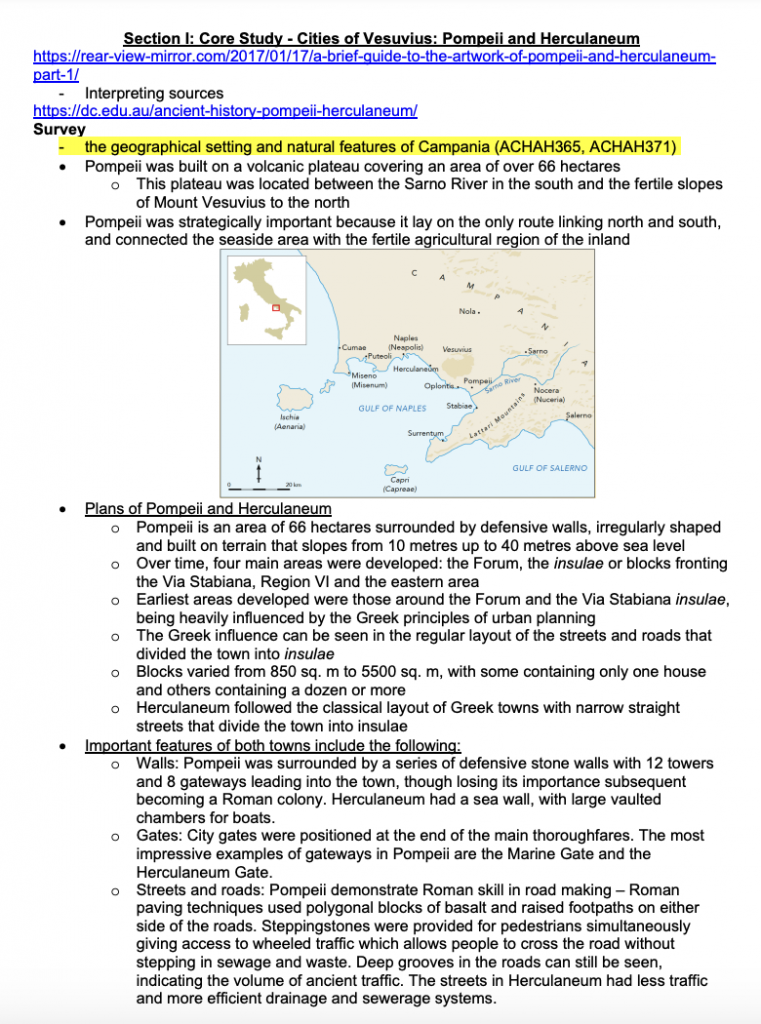HSC Ancient History on Pompeii and Herculaneum
Summary:
A condensed summary of notes for the core study Pompeii and Herculaneum with relevant evidence to each syllabus points and contemporary issues (new discoveries up to 2020!) highlighted by the ‘reconstruction and conservation of the past’. Each syllabus point is discussed comprehensively, with examples and quotes that will guide you to write the best short responses 😀
These notes are based on the Ancient History Stage 6 Syllabus (2017):
SURVEY
– the geographical setting and natural features of Campania
– the eruption of AD 79 and its impact on Pompeii and Herculaneum
– early discoveries and the changing nature of excavations in the 19th and 20th centuries
– representations of Pompeii and Herculaneum over time
FOCUS OF STUDY
Investigating and interpreting the sources for Pompeii and Herculaneum:
The evidence provided by the range of sources, including site layout, streetscapes, public and private buildings, ancient writers, official inscriptions, graffiti, wall paintings, statues, mosaics, and human, animal and plant remains from Pompeii and Herculaneum, as relevant for:
– the economy
– the social structure
– local political life
– everyday life
– religion
– the influence of Greek and Egyptian cultures
Reconstructing and conserving the past
– changing interpretations: impact of new research and technologies
– issues of conservation and reconstruction
– ethical issues: excavation and conservation, study and display of human remains
– value and impact of tourism: problems and solutions
Excerpt:
HSC Ancient History on Pompeii and Herculaneum
Section I: Core Study – Cities of Vesuvius: Pompeii and Herculaneum
https://rear-view-mirror.com/2017/01/17/a-brief-guide-to-the-artwork-of-pompeii-and-herculaneumpart-1/
– Interpreting sources
HSC Ancient History Part 1: Core Study – Cities of Vesuvius – Pompeii and Herculaneum
Survey
– the geographical setting and natural features of Campania (ACHAH365, ACHAH371)
• Pompeii was built on a volcanic plateau covering an area of over 66 hectares
o This plateau was located between the Sarno River in the south and the fertile slopes of Mount Vesuvius to the north
• Pompeii was strategically important because it lay on the only route linking north and south, and connected the seaside area with the fertile agricultural region of the inland


Reviews